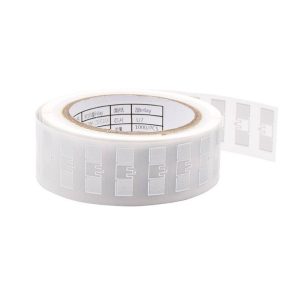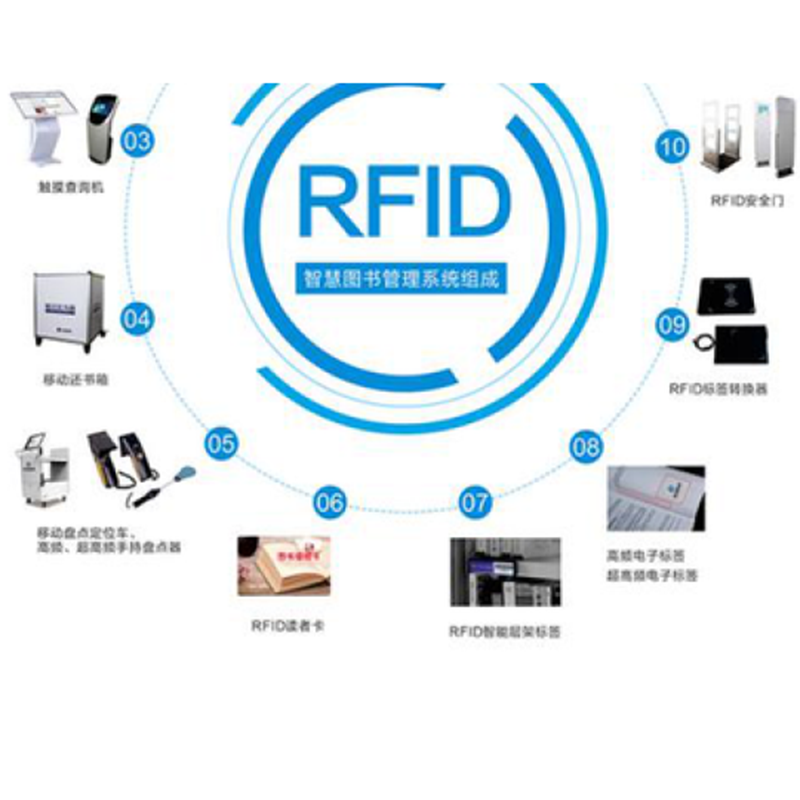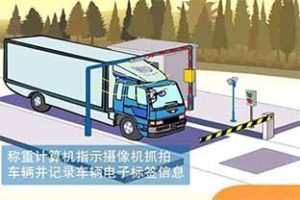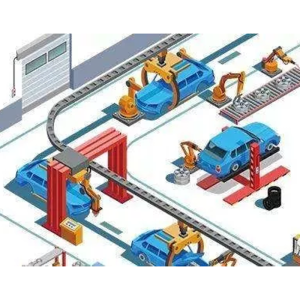Analysis of the Industry Prospects and Application Fields of Ultra High Frequency RFID Electronic Label Systems
RFID (Radio Frequency Identification) tags, commonly known as electronic tags or transponders, are a non-contact automatic identification technology that utilizes radio frequency communication. RFID tags have the characteristics of small size, large capacity, long lifespan, and reusability. They can support fast reading and writing, non visual recognition, mobile recognition, multi-target recognition, positioning, and long-term tracking management.

Analysis of the Industry Prospects and Application Fields of Ultra High Frequency RFID Electronic Label Systems
The most basic electronic tag system consists of three parts:
Tag: composed of coupling components and chips, each tag has a unique electronic code. High capacity electronic tags have user writable storage space and are attached to objects to identify the target object;
Reader: a device that reads (and sometimes can also write) tag information, which can be designed as handheld or fixed;
Antennas transmit RF signals between tags and readers.
Data storage: Compared to traditional forms of labels, it has a larger capacity (1 bit to 1024 bits), and data can be updated at any time, making it readable and writable.
Reading and writing speed: Compared with barcodes, there is no need to align and scan in a straight line, resulting in faster reading and writing speed. It can recognize multiple targets and movements.
The operating frequency of ultra-high frequency tags is between 860MHz and 960MHz, and can be divided into two categories: active tags and passive tags. During operation, the RF tag is located in the far-field area of the reader antenna radiation field. The coupling method between the tag and the reader is electromagnetic coupling. The reader antenna radiation provides RF energy to the passive tag, awakening it. The corresponding RFID system reading distance is generally greater than 1 meter, with typical situations ranging from 4 meters to 6 meters and a maximum of more than 10 meters.

Analysis of the Industry Prospects and Application Fields of Ultra High Frequency RFID Electronic Label Systems
Data storage: Compared to traditional forms of labels, it has a larger capacity. (1 bit -1024 bit), data can be updated at any time, readable and writable
Reading and writing speed: Compared with barcodes, there is no need to align and scan in a straight line, resulting in faster reading and writing speed. It can recognize multiple targets and movements.
Easy to use: Small in size, easy to package, and can be embedded into the product.
Security: Specialized chips, unique serial numbers, and difficult to replicate.
Durable: No mechanical failures, long service life, and resistant to harsh environments.
RFID radio frequency identification is a non-contact automatic identification technology that automatically identifies target objects and obtains relevant data through radio frequency signals. The identification work does not require manual intervention and can work in various harsh environments. RFID technology can recognize high-speed moving objects and simultaneously recognize multiple tags, making operation fast and convenient.
Analysis of the Industry Prospects and Application Fields of Ultra High Frequency RFID Electronic Label Systems
RFID electronic tags are a breakthrough technology:
Firstly, it can recognize individual very specific objects, rather than only recognizing one type of object like barcodes;
Secondly, it uses radio frequency, which can read data through external materials, while barcodes must rely on lasers to read information;
Thirdly, multiple objects can be recognized simultaneously, while barcodes can only be read one by one. In addition, the amount of stored information is also very large
The basic working principle of RFID technology is not complicated: after the tag enters the magnetic field, it receives the RF signal emitted by the interpreter and sends it out for storage based on the energy obtained from the induced current
Product information in the chip (PassiveTag, passive tag or passive tag), or actively sending a signal of a certain frequency (ActiveTag, active tag or active tag);
After the interpreter reads and decodes the information, it is sent to the central information system for relevant data processing.Analysis of the Industry Prospects and Application Fields of Ultra High Frequency RFID Electronic Label Systems
The RFID (Radio Frequency Identification) system consists of two parts: a read/write unit and an electronic transceiver. The reader emits electromagnetic pulses through the antenna, and the transceiver receives these pulses and sends stored information to the reader as a response. In fact, this is the process of non-contact reading, writing, or deleting data from memory.
Technically speaking, a “smart tag” includes an RFID circuit consisting of an RFID chip with an RFID RF part and an ultra-thin antenna loop, which is embedded into the tag along with a plastic sheet. Usually, there is also a paper label attached to this label, on which important information can be clearly printed.
The current smart tags are generally the size of credit cards, and there are also tags with a size of 4.5 x 4.5cm for small goods, as well as circular tags with a diameter of 4.7 cm used on CDs and DVDs. Compared to other ID technologies such as barcodes or magnetic stripes, the advantage of transceiver technology lies in the wireless connection between the reader and the transceiver: the read/write unit does not require visual contact with the transceiver, so it can be fully integrated into the product. This means that the transceiver is suitable for harsh environments and is not sensitive to moisture, dirt, and mechanical effects. Therefore, the transceiver system has very high reading reliability, fast data acquisition, and the last and most important point is to save labor and paper.
Analysis of the Industry Prospects and Application Fields of Ultra High Frequency RFID Electronic Label Systems
RFID technology, as an advanced automatic identification and data collection technology, is recognized as one of the top ten important technologies of the 21st century and has been successfully applied in various fields such as production and manufacturing, logistics management, and public safety. At present, developed countries such as Europe and America are at a leading level in chip, terminal equipment, and system applications, especially in standard setting and technology development. With the maturity and popularization of RFID technology, governments around the world have realized the impact and enormous business opportunities of RFID technology on the future, formulated relevant policies or invested material resources, and actively promoted the development of their own RFID industry.
Donglai Precision Electronics mainly engages in RFID tags, RFID electronic tags, RFID technology, RFID readers and writers, RFID asset management systems, RFID cards, RFID devices, electronic tags, RF tags, high-frequency tags, library RFID tags, and automatic recognition technology solutions
We will provide you with 1V1 technical consulting services for free! We have a research and development center of over 3000 square meters in Shenzhen Guangming Pilot Industry Base. Our research and development center has 12+laboratories and strong research and development capabilities. We are a trusted manufacturer. Please feel free to contact us for inquiries and free samples!






